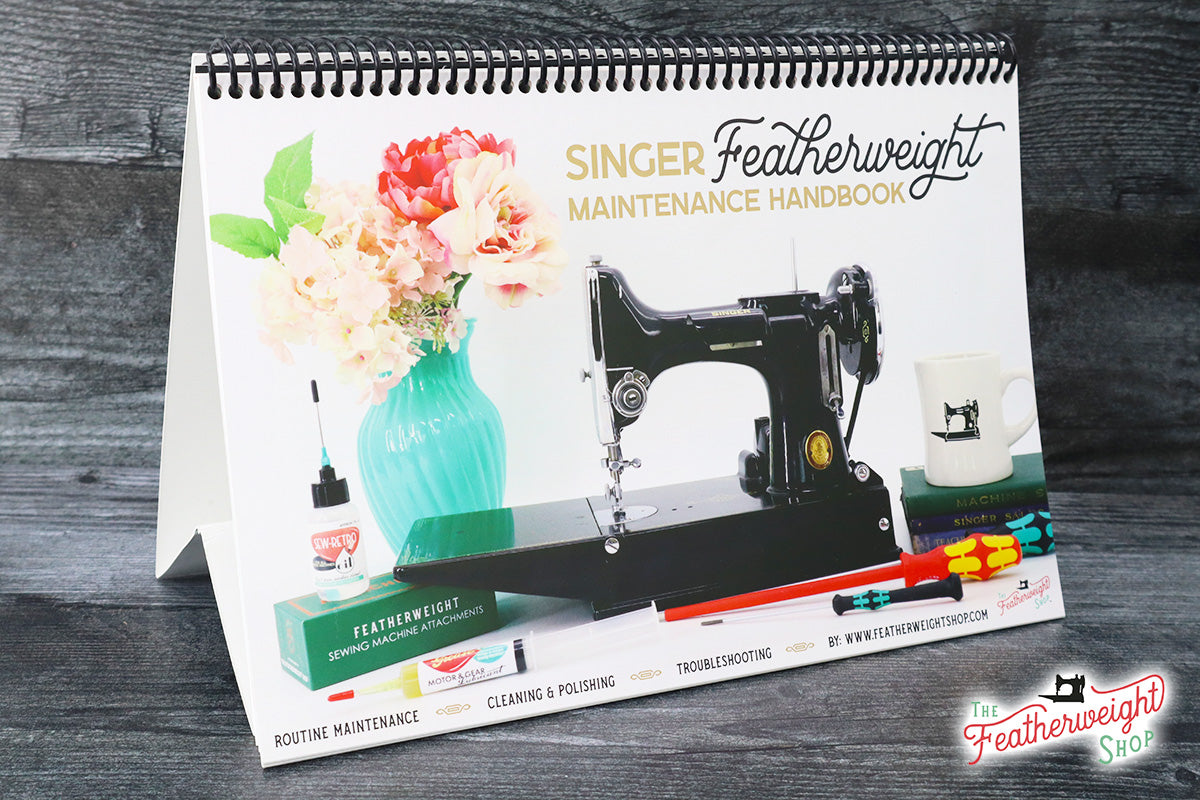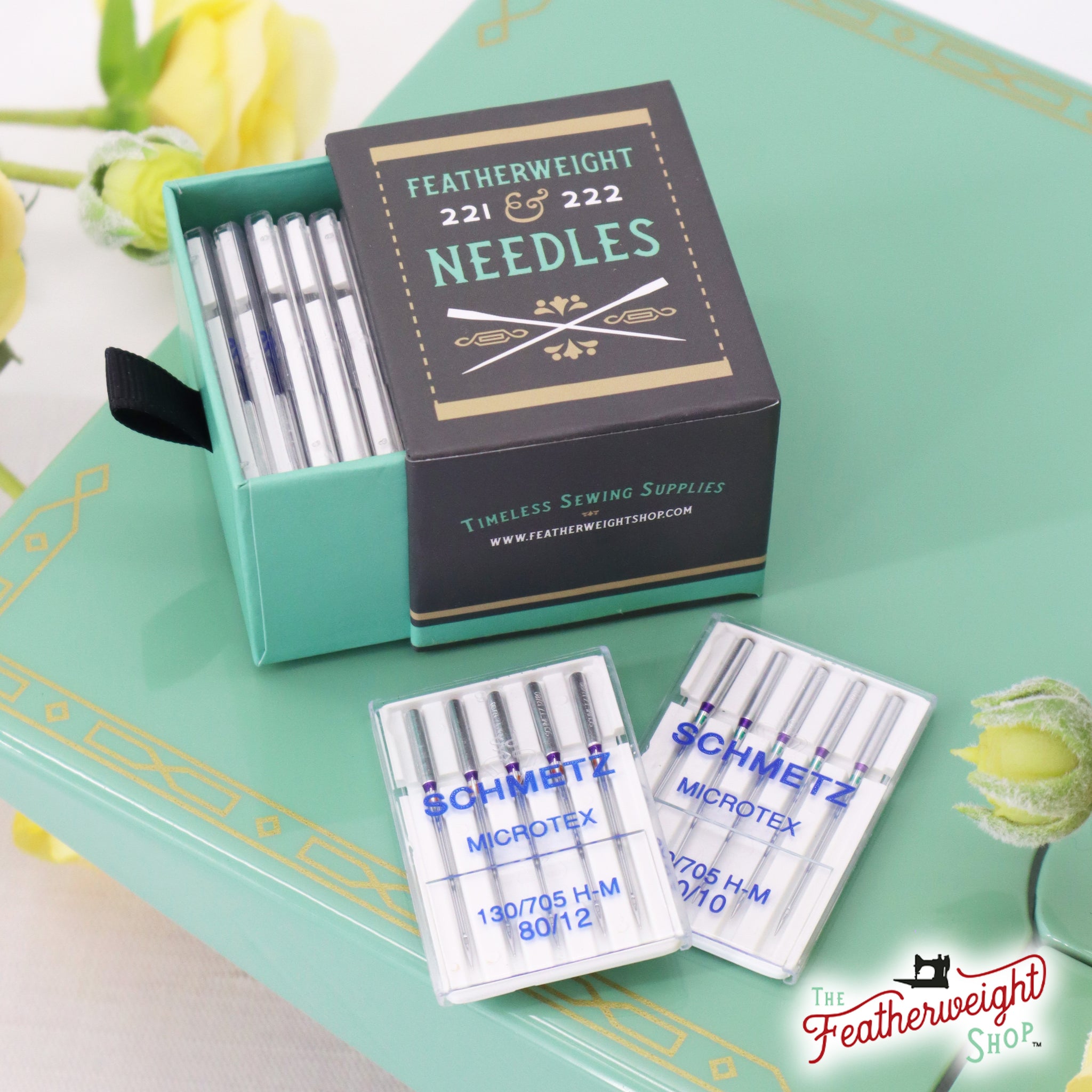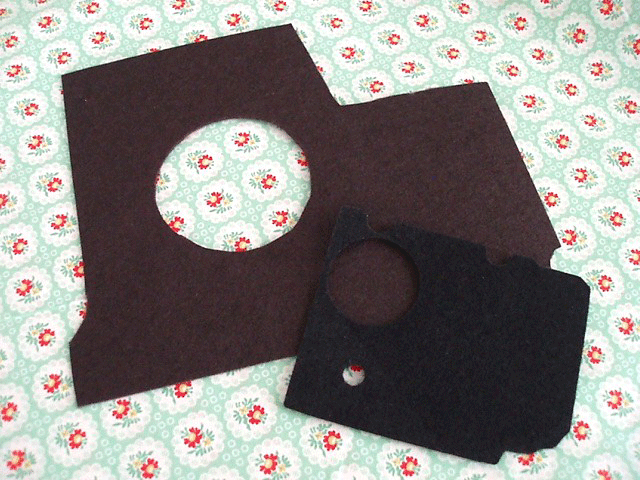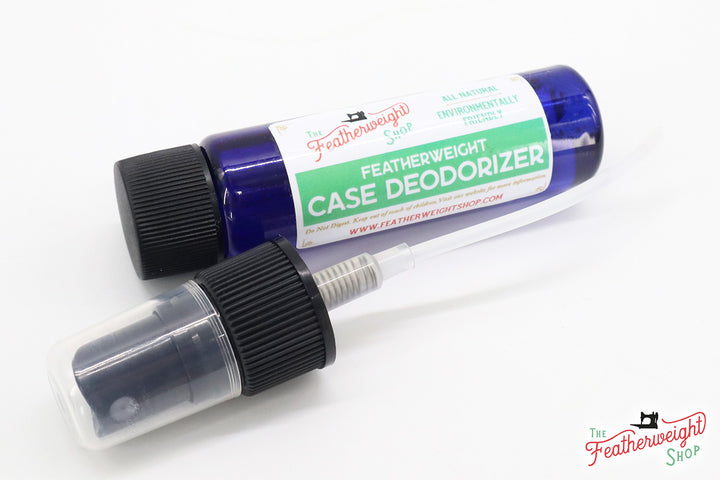Taxes and discounts calculated in checkout.
BROWSE SCHOOLHOUSE
 Singer Featherweight FAQs
Singer Featherweight FAQs

1. Is my Singer Sewing Machine a Featherweight?

Singer Model 15
(not a Singer Featherweight)
UPDATE: This article is very helpful when learning to distinguish a bona fide Singer Featherweight compared to other older, black Singers from the same era.
Many people wonder if their old Singer Sewing Machine that came with a carrying case and is "portable" gives it the classification of being a Featherweight. While the old black Singers bear similar appearances with their elegant shape, sleek black paint, and smooth lines, the first evidence to consider is the name difference, that being the word "feather" in Featherweight. The old Singers in wooden domed top cases or rectangular tweed-covered cases are quite heavy, and produced of cast iron. In fact, most old Singer Sewing Machines were made of cast steel.


Singer Featherweight Model 221
For further review, follow the link to this article which contains more details and model comparison of the Singer Featherweight to other vintage Singer sewing machines.
2. What is my Featherweight worth? And do you buy Featherweights?

2b. Do we buy machines? Yes, we do! Our grading system is very, very particular so that our customers can be assured that the grade it is given is the graded machine they will receive. We have a large clientele base and because of the fastidious process we take in selecting and servicing each Singer Featherweight that goes through our shop, our customers will wait - often months at a time - to purchase a machine from us. The Featherweight machines our customers buy from our shop are those that are loved, cherished and used to make many, many lovely quilts. (We have several customers who are even collecting Featherweights for their granddaughters to learn to sew on!) Just remember that we are The Singer Featherweight Shop, so like most antique shops that buy items for their store, we have to purchase things at a price that still affords us to earn a living for our family. This is why we use eBay for our pricing gauge for the current market price of the average Singer Featherweight. So, you can either sell it on eBay with their fee structure, and bidding process (and take a chance as to the final price), or you can sell it directly to us with no eBay fees, feedback concerns, customer service issues, etc. - plus we cover the cost of postage. Your machine could be one of those that are passed down to the next generation as a very special memory and family heirloom! Please contact us if this is the avenue you would prefer to take to sell your Singer Featherweight machine.
3. I just got a Singer Featherweight, what should I do first?

Next, we recommend you clean the machine (if needed), then oil and lubricate it properly as directed in your manual or the step-by-step guide in the Singer Featherweight Maintenance Handbook. In addition, start with a fresh, new Schmetz needle, making sure you insert it correctly into the shaft.
Then thread the machine following each step and if you need an additional reference for this process, we also provide a photo tutorial for proper threading in our "Getting To Know Your Featherweight" series.
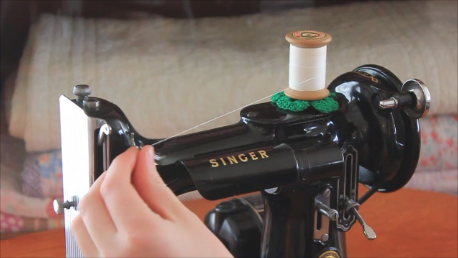
Wind a bobbin using the same thread you are using for your top thread and sew a stitch sample using two layers of fabric. It is recommended to use the same type of fabric you would normally use for sewing on your machine - quilter's cottons are ideal for your initial test. If your machine requires additional servicing, then again, the Singer Featherweight Maintenance Handbook offers additional technical details. A lot of times, however, it can be something quite simple that needs fixing, so be sure to check out our Featherweight Schoolhouse.
4. How do I clean my Featherweight?
Clean & Polish your Featherweight using a high-quality product like Sew-Retro Clean & Shine.

Do not use household cleaners or soap and water to clean your machine. Many of these contain alcohol, or degreasers or even citrus that will harm the clearcoat of your Featherweight machine.


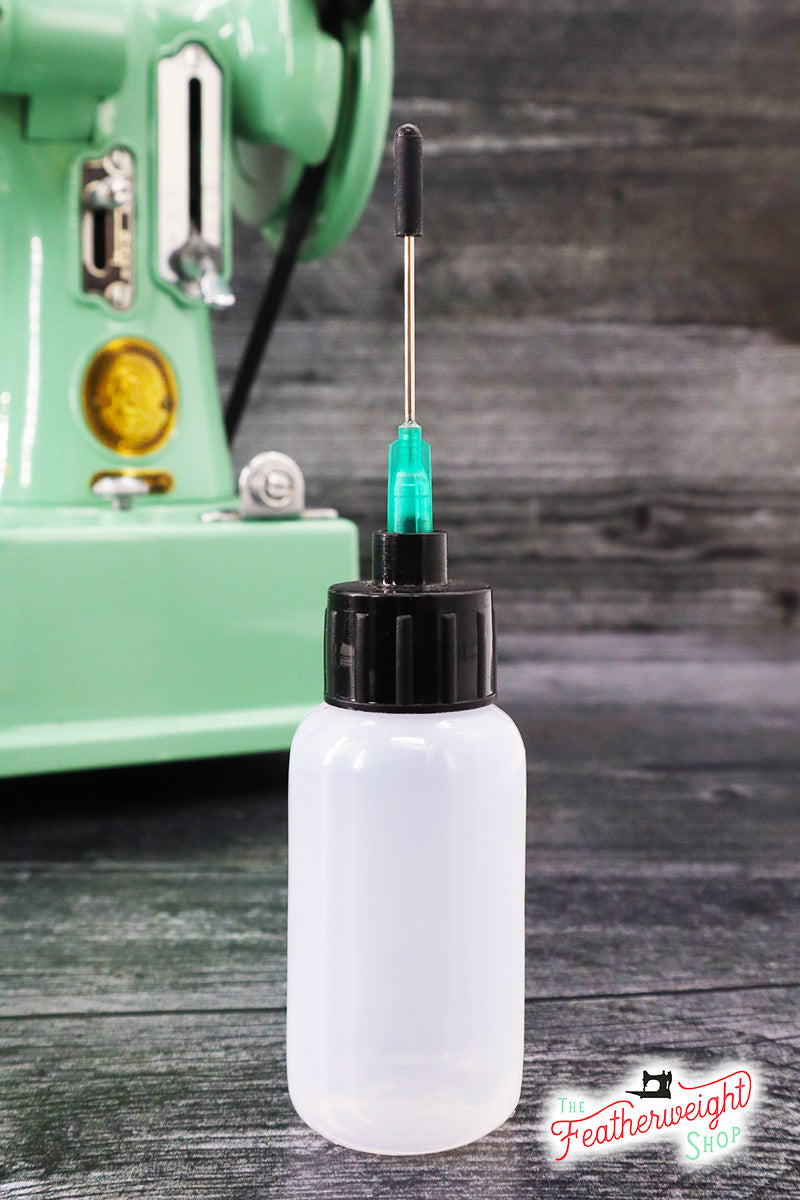
5. Why do my Featherweight and Case have such a strong odor?


Click Here For a Printout of the Process


6. Why is my Featherweight skipping stitches and/or not picking up the bobbin thread, or the thread keeps breaking?

Skipped stitches and bobbin thread that won't pick up are most commonly caused by the needle incorrectly inserted or the machine threaded improperly. If you changed your needle lately (or even if you haven't), then you might need to check to make sure it is inserted properly into the shaft. The flat side of the needle faces left on a Featherweight. If it faces towards the back (like most modern machines) or towards the right, then the top thread will not pick up the bobbin thread properly. This prevents a stitch from forming.

The other issue could be that the thread is going through the needle from the wrong direction - it needs to be threaded from right to left as shown in the photo below.




7. Why does my needle go up and down when I try to wind a bobbin?

To wind a bobbin you need to loosen the stop-back motion knob on the end of the handwheel. This is supposed to prevent the needle from bobbing up and down while the bobbin is being wound. Sometimes, however, no matter how much you loosen the stop-back motion knob, the needle will still move up and down as you wind a bobbin. Most of the time this is remedied quite easily and is usually just a result of someone having had the handwheel apart at some point in time and not reassembling it correctly.

To fix it you will need to loosen the teeny tiny set screw on the stop-back motion knob and remove the knob altogether. There is a handwheel washer on the shaft with two small square tabs on the inner circle of the washer. These tabs need to be facing out towards the knob. Also, the small set screw needs to be set between two of the three outer ears on the outside of the washer. When the knob is loosened (to wind a bobbin) the set screw is supposed to hit one of these ears keeping the knob from coming all the way off. If the knob will not loosen because the set screw is too close to one of the ears, then the washer needs removed and turned 180 degrees. If this does not solve your problem, there may be old lubricant or residue on the shaft inside the handwheel. Steel wool can be used to clean it out. Follow it up with one drop of sewing machine oil to the shaft. Replace your stop-back motion knob and tighten the set screw.

Here's a video tutorial as well - explaining this whole process:
8. How come my machine won't sew - the motor turns, but the needle will not move?
- If the machine was last used to wind a bobbin, then most likely the stop-back motion knob was not re-tightened after the bobbin was finished. Tighten it up again and your machine should sew just fine.

- Another possibility is that the belt may be too loose. If the handwheel turns manually but not with the motor, your belt may need to be tightened - just not too tight! This is an easy fix. The following video will show you how to do this:
- Finally, you could have thread caught behind the bobbin case base. If your handwheel will not turn and the machine is jammed then the following video tutorial will show you what to check for. It's amazing how such a tiny piece of thread can seize a Featherweight completely.
OR
9. Why is my Featherweight jammed causing the handwheel to not turn?
Most likely, you have thread caught behind the bobbin case base. If your handwheel will not turn and the machine is jammed then the following video tutorial will show you what to check for. It's amazing how such a tiny piece of thread can seize a Featherweight completely.

10. How do I clean my Featherweight Case?
- Use Elmer's Wood Glue to secure any loose fabric on the case and let dry.
- Find the largest, jumbo size (really stinky!) Black Sharpie Marker and mark over any spots or scuffs, or do it to the whole case if you want to take the time (and breathe the fumes).
- Next, apply Kiwi Edge Ink or Scuff Cover (this is the black shoe polish that is liquid with a spongy top for application) over the whole case.
- When the case is completely dry apply black Kiwi Paste Shoe Polish (the kind in the little round tin). Apply it with a bristle brush, let dry, and wipe with a cloth or paper towel.
- Buff the case with a shoe-buffing brush and wipe down with a soft rag. Be sure to wipe it down well so that your case won't leave any black marks on that new quilt you pieced together.
- If you need a new case handle, we carry replacement leather handles in our Featherweight Shop.

11. What years were Singer Featherweights made?





 Singer Featherweight FAQs
Singer Featherweight FAQs

